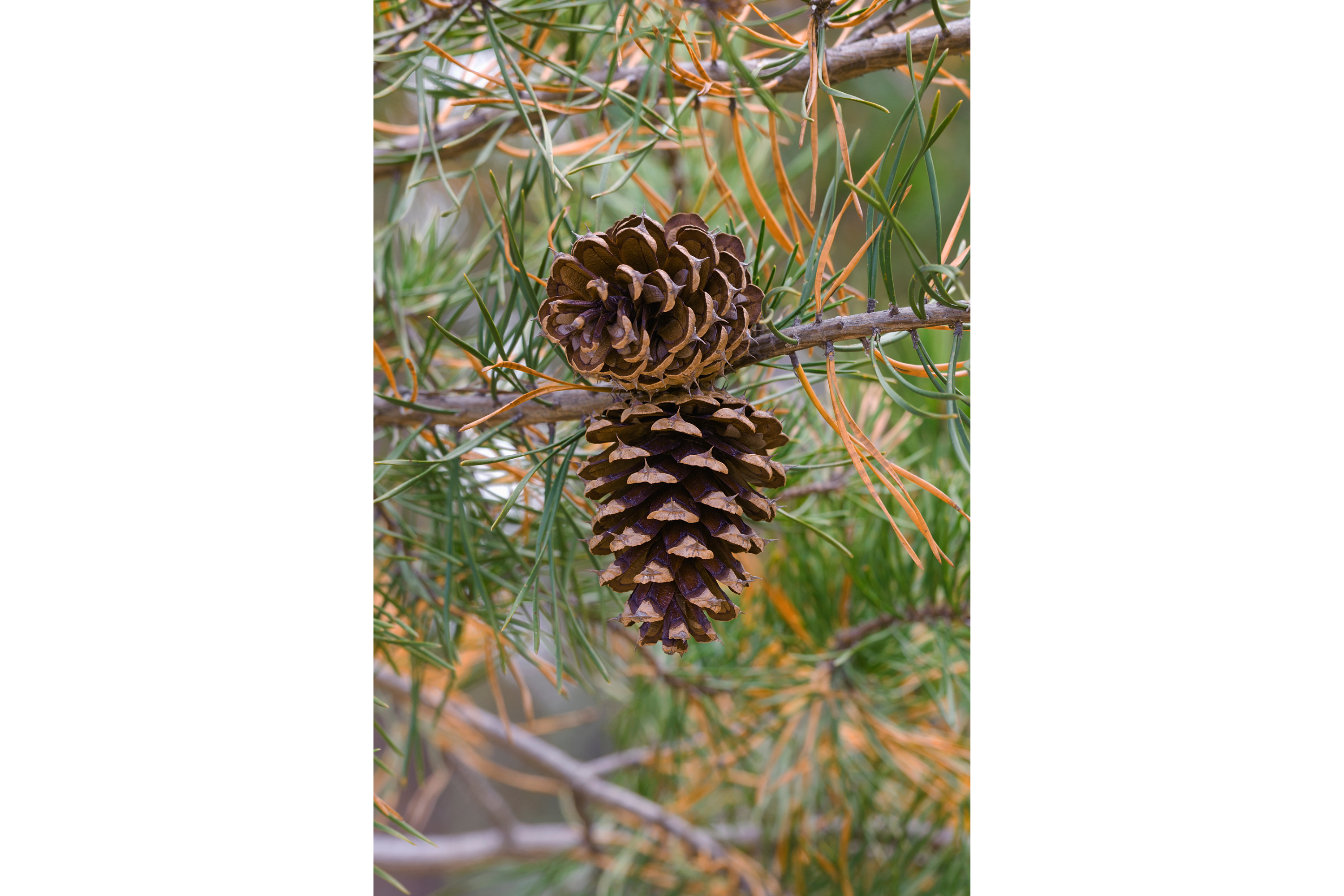Virginia pine
(Pinus virginiana)

Description
Pinus virginiana, the Virginia pine, scrub pine, Jersey pine, is a medium-sized tree, often found on poorer soils from Long Island in southern New York south through the Appalachian Mountains to western Tennessee and Alabama. The usual size range for this pine is 9–18 m, but can grow larger under optimum conditions. The trunk can be as large as 20 inches diameter. This tree prefers well-drained loam or clay, but will also grow on very poor, sandy soil, where it remains small and stunted. The typical life span is 65 to 90 years. The short (4–8 cm), yellow-green needles are paired in fascicles and are often twisted. Pinecones are 4–7 cm long and may persist on the tree for many years, often (though not always) releasing their seeds in the second year. In growth habit, some trees may be inclined with twisted trunks. This pine is useful for reforesting and provides nourishment for wildlife. Its other main use is on Christmas tree farms, despite having sharp-tipped needles and yellowish winter color. It also can provide wood pulp and lumber. Like some other southern yellow pines, Virginia pine lumber case hardens. That is, it becomes very hard over time during wood drying. Wood from Virginia pine is not normally considered to resist rot unless treated with preservatives. Pinus virginiana is endemic to the United States and can be identified by a key characteristic; the relatively short needles are twisted and come in bunches of two. The needles are typically two to eight centimeters in length. There is hair on the bracts and on the bud scales of the P. virginiana. The leaf sheath of the P. virginiana is greater than 2.5 millimeters long. The cones of the P. virginiana only open after they are mature. The branches of the Pinus virginiana are flexible. They will bend when pressure is added to them. Pinus virginiana are between 9 and 18 meters tall. The bark of P. virginiana is red and brown in color, and also has the tendency to be rough with relatively small bark scales. The pollen cones are circular, almost elliptical and are 10–20 millimeters in size. They are the same color as the bark, typically. Seed cones are spread throughout the tree. The mature seed cones are much larger than the pollen cones. Pinus virginiana inhabit dry forested areas. The tree occurs in New York, New Jersey, Pennsylvania, Virginia, West Virginia, Ohio, Illinois, Kentucky, Tennessee, North Carolina, Georgia, Alabama, Mississippi, Indiana, South Carolina, Maryland and Delaware.
Taxonomic tree:







